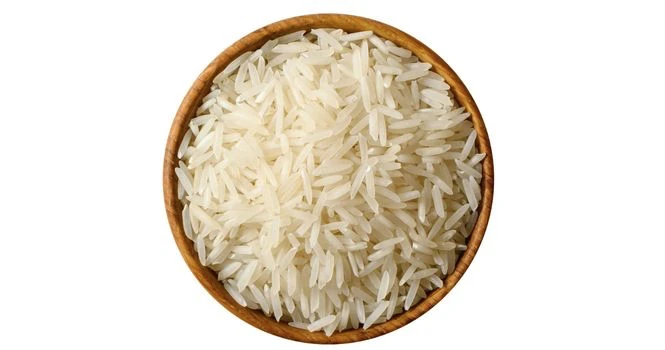Tempeh: The Nutrient-Packed Fermented Soybean Wonder

Tempeh is a traditional soy product originating from Indonesia. It is a fermented food, known for its distinctive flavor, nutty texture, and numerous health benefits. Unlike other soy products such as tofu, tempeh is made from whole soybeans, which gives it a higher content of protein, dietary fiber, and vitamins.
Overview and Origin
It’s history can be traced back several centuries in Indonesia, where it has been a staple source of protein. It is believed to have originated on the island of Java, evolving as a byproduct of the tofu-making process. The unique fermentation process that tempeh undergoes was discovered accidentally when soybean remnants, left in the warm environment, fermented naturally with a specific type of mold. This led to the creation of a solid cake-like form that had an appealing taste and texture.
The popularity of tempeh has grown globally, particularly among vegetarians and vegans, due to its high protein content and versatility in cooking. It’s celebrated not only for its nutritional benefits but also for its environmental sustainability as a plant-based protein source.
Basic Production Process
The production of tempeh involves a few key steps:
1. Soybean Preparation: The process begins with whole soybeans, which are cleaned and then soaked in water to soften.
2. Dehulling and Cooking: After soaking, the soybeans are dehulled, removing the outer layer, and then cooked. Cooking is essential for denaturing the proteins and making the beans more digestible.
3. Cooling: The cooked soybeans are spread out to cool down to an appropriate temperature conducive to fermentation.
4. Inoculation: The cooled soybeans are then mixed with a tempeh starter, which is a mixture of live mold spores, usually Rhizopus oligosporus or Rhizopus oryzae. This mold is responsible for fermenting the soybeans.
5. Fermentation: The inoculated soybeans are then packed into a container or wrapped in banana leaves, traditionally, allowing them to ferment. The fermentation process typically takes 24 to 48 hours. During this time, the mold binds the soybeans into a firm, compact cake by producing a white mycelium.
6. Harvesting: Once the fermentation process is complete, the tempeh is harvested. It appears as a dense, white cake, with a nutty flavor and a firm texture.
This fermentation process not only binds the beans together but also enhances the nutritional profile of tempeh by increasing its digestibility and the availability of its nutrients. The fermentation also produces natural antibiotics that are believed to confer health benefits.
Understanding the basics of tempeh’s production and origins provides a foundation for appreciating its value in the diet, both from a nutritional and cultural standpoint.
Nutritional Profile of Tempeh
It is a highly nutritious food that serves as an excellent source of protein, vitamins, and minerals, making it a favored choice for many health-conscious individuals, particularly those following vegetarian or vegan diets.
Macronutrients
- Protein: It is renowned for its high protein content, making it an ideal plant-based protein source. A 100-gram serving of tempeh typically contains around 18-20 grams of protein, which is comparable to meat and higher than most other legumes and plant-based proteins. This makes it especially valuable for muscle repair, growth, and overall body function.
- Carbohydrates: It contains a moderate amount of carbohydrates, with a 100-gram serving providing about 9-13 grams. The carbohydrates in tempeh are mostly in the form of dietary fiber, which aids in digestion and provides a sense of fullness.
- Fats: The fat content in tempeh is relatively low, with a 100-gram serving containing about 10-12 grams of fat. The fats in tempeh are primarily unsaturated fats, including linoleic acid (an omega-6 fatty acid) and alpha-linolenic acid (an omega-3 fatty acid), which are beneficial for heart health.
Vitamins and Minerals
It is a rich source of various vitamins and minerals, including:
- Calcium: Important for bone health, tempeh provides a good plant-based source of calcium, especially when made with calcium sulfate.
- Iron: It contains a significant amount of iron, which is crucial for the production of red blood cells and the prevention of anemia, particularly important for vegetarians and vegans.
- Magnesium: This mineral is vital for many biochemical reactions in the body and is abundantly found in tempeh, supporting muscle and nerve function, blood glucose control, and bone health.
- Phosphorus: Essential for the formation of bones and teeth, phosphorus is plentiful in tempeh, aiding in the maintenance and repair of all tissues and cells.
- Vitamin B2 (Riboflavin): It is a good source of riboflavin, which plays a significant role in energy production and the metabolism of fats, drugs, and steroids.
- Vitamin B3 (Niacin): Important for the digestive system, skin, and nerves, niacin also plays a key role in converting food to energy.
Dietary Fiber and Probiotics Content
- Dietary Fiber: It is high in dietary fiber, which promotes digestive health by preventing constipation and may help in managing blood sugar levels.
- Probiotics: Due to the fermentation process involved in making tempeh, it contains probiotics, which are beneficial bacteria that can improve gut health. These probiotics help in maintaining a healthy balance of gut flora, which is essential for digestion, absorption of nutrients, and even the immune system.
Overall, tempeh’s nutritional profile makes it an excellent addition to any diet, providing essential nutrients while supporting overall health and well-being.
Health Benefits of Tempeh
Tempeh, with its rich nutritional profile, offers a myriad of health benefits, making it an excellent food choice for overall wellness.
Role in Gut Health and Digestion
- Probiotics: The fermentation process that tempeh undergoes produces natural probiotics, beneficial bacteria that promote a healthy gut microbiome. A balanced gut flora aids in digestion, enhances nutrient absorption, and supports immune function.
- Dietary Fiber: It’s high fiber content contributes to digestive health by helping to maintain regular bowel movements and preventing constipation. Fiber can also serve as a prebiotic, providing food for beneficial gut bacteria, further supporting gut health.
Impact on Cholesterol Levels and Heart Health
- Soy Protein: Studies have shown that soy protein, which is abundant in tempeh, can contribute to lowering LDL (bad) cholesterol levels, potentially reducing the risk of heart disease.
- Unsaturated Fats: The presence of unsaturated fats, including omega-3 and omega-6 fatty acids, in tempeh may have a positive effect on heart health by improving lipid profiles and reducing inflammation, which is a risk factor for heart disease.
Benefits for Weight Management
- High Protein Content: The high protein content in tempeh not only aids in muscle repair and growth but also contributes to satiety, helping you feel full longer, which can prevent overeating and assist in weight management.
- Low-Calorie Density: Tempeh is nutrient-dense yet relatively low in calories, making it an excellent food choice for those looking to maintain or lose weight without sacrificing nutritional intake.
Potential Benefits for Managing Blood Sugar Levels
- Low Glycemic Index: The carbohydrates in tempeh are mainly in the form of dietary fiber, which has a minimal impact on blood sugar levels. Foods with a low glycemic index, like tempeh, are beneficial for blood sugar control, making tempeh a suitable option for individuals with diabetes or those managing their blood sugar levels.
- Protein and Fiber Synergy: The combination of protein and fiber in tempeh can help slow down the digestion and absorption of carbohydrates, further stabilizing blood sugar levels after meals.
Contribution to Bone Health
- Calcium and Magnesium: It is a good source of minerals such as calcium and magnesium, which are essential for bone health. Calcium is vital for building and maintaining strong bones, while magnesium plays a role in converting vitamin D to its active form, which helps in calcium absorption.
- Protein: Adequate protein intake is crucial for bone health, as protein makes up a significant part of the bone structure and aids in bone repair and maintenance. Tempeh, being high in protein, contributes positively to bone density and overall bone health.
Incorporating tempeh into your diet can offer numerous health benefits, from improving gut health and aiding in digestion to supporting heart health, aiding in weight management, helping regulate blood sugar levels, and contributing to stronger bones. As with any dietary change, it’s important to consider individual health conditions and dietary needs.
Culinary Uses of Tempeh
It’s unique texture and nutritional profile make it a versatile and beneficial ingredient in various culinary applications, from traditional dishes to innovative culinary creations.
How to Prepare and Cook Tempeh
- Slice or Cube: Start by slicing or cubing the tempeh to your desired thickness, depending on the recipe. Thinner slices tend to absorb marinades and flavors more thoroughly.
- Steam or Boil (Optional): Although this step is optional, steaming or boiling tempeh for about 10 minutes before marinating can help soften it and enhance its ability to absorb flavors. This can also reduce its natural bitterness.
- Marinate: To infuse tempeh with flavors, marinate it for at least 30 minutes or overnight. Tempeh soaks up marinades well, making it flavorful throughout.
- Cook: Tempeh can be cooked in various ways, including baking, frying, grilling, or sautéing. The cooking method will depend on the desired outcome and recipe. For a crispy texture, pan-frying or baking until golden brown is ideal.
Versatility in Recipes: From Traditional to Innovative
- Traditional Uses: In Indonesian cuisine, tempeh is often sliced, marinated, and fried to make tempeh goreng, served with rice and sambal. It can also be used in stews and soups, absorbing the flavors of the broth.
- Sandwiches and Wraps: Sliced and grilled or fried tempeh makes an excellent filling for sandwiches and wraps, offering a hearty and nutritious alternative to meat.
- Salads: Add grilled or baked tempeh cubes to salads for a protein boost, complementing the fresh vegetables with its savory flavor.
- Stir-Fries: Incorporate tempeh into stir-fries, cooking it with a variety of vegetables and a flavorful sauce for a quick and healthy meal.
- Vegan Entrees: Tempeh can be crumbled and used as a ground meat substitute in dishes like chili, tacos, and pasta sauces, providing a similar texture and protein content.
Flavor Enhancement Tips and Marination Techniques
- Acidic Components: Adding an acidic component to your marinade, such as vinegar, lemon juice, or lime juice, can help tenderize the tempeh and enhance flavor absorption.
- Savory Elements: Incorporate soy sauce, tamari, or liquid aminos for a savory depth of flavor, which complements tempeh’s nuttiness.
- Sweet Balance: A touch of sweetness, such as maple syrup, agave nectar, or brown sugar, can balance the savory elements and add complexity to the dish.
- Herbs and Spices: Use a variety of herbs and spices in your marinades and cooking to infuse the tempeh with different flavors, catering to the cuisine you’re preparing. For example, use curry powder for Indian-inspired dishes or smoked paprika for a smoky flavor.
- Let It Marinate: Allowing tempeh to marinate for an extended period, ideally a few hours or overnight, will enhance its flavor significantly, making it more palatable and enjoyable.
Experimenting with tempeh in the kitchen can lead to delicious discoveries and add a nutritious, protein-rich component to your meals. Whether sticking to traditional preparations or exploring innovative recipes, tempeh’s versatility makes it a valuable ingredient in any culinary repertoire.
Tempeh vs. Other Protein Sources
Tempeh stands out among both plant-based and animal-based proteins for its unique nutritional profile, texture, and versatility. Here’s how tempeh compares to other common protein sources:
Comparison with Tofu, Seitan, and Other Plant-Based Proteins
- Tofu: Like tempeh, tofu is made from soybeans, but the processes differ significantly. Tofu is coagulated soy milk pressed into soft blocks, resulting in a smoother texture and a more subtle flavor than tempeh. While tofu is a good source of protein, tempeh often contains more protein and fiber due to the whole soybeans and fermentation process. Additionally, tempeh’s fermentation may offer digestive and nutritional benefits that tofu does not.
- Seitan: Seitan is a protein-rich food made from wheat gluten, making it unsuitable for those with gluten sensitivities or celiac disease. Unlike tempeh, which is soy-based, seitan has a chewy, meat-like texture but lacks the fiber content and potential probiotic benefits of fermented tempeh.
- Other Plant-Based Proteins: Other plant-based proteins include legumes (beans, lentils, chickpeas), grains (quinoa, barley), nuts, and seeds. While these sources are nutritious, tempeh stands out for its higher protein content, fiber, and unique fermentation benefits, which can enhance nutrient absorption and gut health.
Nutritional Advantages Over Animal-Based Proteins
- Fiber Content: One of the most significant advantages of tempeh over animal-based proteins is its high dietary fiber content. Animal proteins like meat, poultry, and fish contain no fiber, whereas tempeh provides both soluble and insoluble fiber, promoting digestive health and satiety.
- Saturated Fat and Cholesterol: It is lower in saturated fats and contains no cholesterol, making it a heart-healthier option compared to many animal-based proteins, which can be high in both.
- Probiotics: The fermentation process that tempeh undergoes produces natural probiotics, beneficial for gut health. These are not found in animal proteins.
- Environmentally Friendly: Producing tempeh and other plant-based proteins generally requires fewer resources and has a lower environmental impact than raising animals for meat, making tempeh a more sustainable choice.
- Health Benefits: Diets high in plant-based proteins like tempeh are often associated with lower risks of various health conditions, including heart disease, high blood pressure, type 2 diabetes, and certain cancers, compared to diets high in red and processed meats.
- Versatility and Ethical Considerations: For those following vegetarian or vegan lifestyles for ethical reasons, tempeh provides a versatile and nutritious protein source that can be adapted to many recipes traditionally made with meat.
While it offers many nutritional advantages, it’s essential to maintain a balanced diet that includes a variety of protein sources to ensure you receive a broad spectrum of nutrients. For individuals with soy allergies, it’s important to explore alternative protein sources to meet nutritional needs.
Sustainability and Environmental Impact
The shift towards plant-based proteins like tempeh is increasingly recognized for its potential environmental benefits. The sustainability of consuming tempeh and other plant-based proteins can be attributed to several factors:
Environmental Benefits of Consuming Plant-Based Proteins Like Tempeh
- Reduced Greenhouse Gas Emissions: The production of plant-based proteins typically generates significantly fewer greenhouse gases compared to animal-based proteins. Livestock farming is one of the largest contributors to methane emissions, a potent greenhouse gas. In contrast, the cultivation of soybeans for tempeh produces much lower levels of emissions.
- Lower Water Usage: Plant-based protein sources generally require less water than animal protein production. The water footprint of soybeans, the primary ingredient in tempeh, is considerably lower than that of livestock, particularly beef and pork, making tempeh a more water-efficient protein choice.
- Efficient Land Use: Producing plant-based proteins like tempeh is more land-efficient than raising animals for meat. Growing soybeans for tempeh uses less land to produce the same amount of protein, freeing up land for other uses and reducing the pressure on deforestation and habitat loss.
- Biodiversity: Plant-based agriculture, when managed sustainably, can support greater biodiversity compared to monoculture animal farming. The production of crops like soy for tempeh can be integrated into agricultural systems that promote ecological balance.
Tempeh’s Carbon Footprint Compared to Other Protein Sources
- Compared to Animal Proteins: Animal-based proteins, especially red meats like beef and lamb, have a significantly higher carbon footprint due to methane emissions from ruminant digestion, manure management, and the extensive resources required for feed and pasture. Tempeh, derived from soybeans, has a much lower carbon footprint, making it a more climate-friendly option.
- Compared to Other Plant Proteins: While all plant-based proteins generally have a lower environmental impact than animal-based proteins, the footprint can vary among plant sources. The production of tempeh may involve more processing steps than some other plant proteins (e.g., lentils or chickpeas), but its overall impact remains low, especially when compared to the intensive processing and resource requirements for meat.
- Transportation and Processing: The environmental impact of tempeh can also depend on factors like transportation, packaging, and the energy used in the fermentation and production processes. Locally produced tempeh with minimal packaging and efficient production methods can further reduce its environmental impact.
Embracing tempeh and other plant-based proteins can contribute to a more sustainable and environmentally friendly food system. By reducing reliance on animal-based proteins, individuals can lower their dietary carbon footprint, contributing to global efforts to mitigate climate change and preserve natural resources.
Incorporating Tempeh into Your Diet
It is a versatile and nutritious plant-based protein that can be easily incorporated into various meals throughout the day. Here are some tips and ideas for those trying tempeh for the first time, as well as meal suggestions for breakfast, lunch, dinner, and snacks.
Tips for Beginners Trying Tempeh for the First Time
- Start with Pre-Marinated Tempeh: If you’re new to tempeh, consider trying pre-marinated versions available in many health food stores. These are often seasoned and ready to cook, making your first experience more convenient and flavorful.
- Experiment with Different Cooking Methods: It can be baked, grilled, sautéed, or steamed. Experimenting with different cooking methods can help you find the texture and flavor you prefer.
- Use Familiar Flavors: When preparing tempeh, use marinades or sauces that you already enjoy with other proteins. This can help make tempeh a more familiar and enjoyable addition to your meals.
- Combine with Other Ingredients: Incorporate tempeh into dishes with a variety of vegetables, grains, and spices. Mixing tempeh with familiar ingredients can make it more palatable for first-time tasters.
Ideas for Breakfast, Lunch, Dinner, and Snacks
Breakfast:
- Tempeh Bacon: Slice tempeh thinly and marinate in a mixture of soy sauce, maple syrup, smoked paprika, and a touch of liquid smoke. Pan-fry until crispy for a delicious vegan bacon alternative, perfect for breakfast sandwiches or as a side with pancakes.
- Tempeh Scramble: Crumble tempeh and sauté with turmeric, garlic, onions, and your choice of vegetables (spinach, bell peppers, tomatoes). Serve with whole-grain toast or wrap in a tortilla for a hearty breakfast burrito.
Lunch:
- Tempeh Buddha Bowl: Top a bowl of quinoa or brown rice with grilled tempeh, assorted vegetables (carrots, cucumbers, edamame, avocado), and a drizzle of tahini or peanut sauce.
- Tempeh Sandwich: Use grilled or marinated tempeh slices as a filling for sandwiches. Add lettuce, tomato, avocado, and your favorite condiments for a satisfying lunch option.
Dinner:
- Tempeh Stir-Fry: Sauté cubed tempeh with a variety of vegetables and a savory stir-fry sauce. Serve over rice or noodles for a simple and nutritious dinner.
- Tempeh Tacos: Crumble and season tempeh with taco spices, then sauté until browned. Use as a filling for tacos, topping with salsa, guacamole, and fresh cilantro.
Snacks:
- Tempeh Sticks: Slice tempeh into sticks, marinate, and bake until crispy. Serve with a dipping sauce like BBQ or honey mustard for a protein-rich snack.
- Tempeh Salad: Add chilled, cubed tempeh to your favorite salad for an easy protein boost.
Incorporating tempeh into your diet can be an enjoyable and healthful journey. Start with simple recipes and familiar flavors, and explore different culinary traditions and innovative dishes as you become more comfortable with this versatile ingredient.
Possible Health Considerations and Allergies
While it is a nutritious and versatile food, it’s important to consider potential health considerations and allergies, especially related to soy products. Here’s how to address these concerns and advice for those with specific dietary restrictions or allergies.
Concerns About Soy Products
- Phytoestrogens: Soy products contain phytoestrogens, plant-based compounds that can mimic the hormone estrogen in the body. Some individuals may be concerned about the effects of phytoestrogens on hormone-related health issues. However, research indicates that moderate consumption of soy foods, including tempeh, is safe for most people and can be part of a healthy diet.
- Thyroid Function: There has been some concern about soy products affecting thyroid function due to compounds called goitrogens. These concerns are primarily relevant in cases of excessive consumption and iodine deficiency. Individuals with thyroid conditions should consult healthcare professionals but can generally consume soy foods like tempeh in moderation without adverse effects.
- GMOs and Pesticides: Some soybeans are genetically modified and may be treated with pesticides. Those concerned about GMOs and pesticide exposure can opt for organic and non-GMO certified tempeh products to minimize these risks.
Advice for Those with Specific Dietary Restrictions or Allergies
- Soy Allergy: Soy is one of the common food allergens. Individuals with a soy allergy should avoid tempeh and seek alternative protein sources, such as lentils, chickpeas, quinoa, or nuts, depending on other dietary restrictions and allergies.
- Gluten Sensitivity or Celiac Disease: While tempeh itself is gluten-free, some commercial tempeh products may be processed in facilities that also handle wheat or may contain added ingredients that contain gluten. Always check labels for gluten-free certification if you have gluten sensitivity or celiac disease.
- Histamine Intolerance: Since tempeh is a fermented product, it can be high in histamines, which some individuals may need to avoid. Those with histamine intolerance should be cautious with fermented foods and consult with a healthcare provider for personalized advice.
General Recommendations
- Moderation: As with all foods, consuming tempeh in moderation is key to a balanced diet. Diverse dietary sources ensure a broad spectrum of nutrients and minimize the risks associated with overconsumption of any single food.
- Consult Healthcare Professionals: Individuals with specific health conditions, dietary restrictions, or allergies should consult healthcare professionals, such as dietitians or allergists, for personalized dietary advice.
- Read Labels Carefully: Always read product labels for potential allergens, added ingredients, and certifications (such as organic or non-GMO) to ensure that the tempeh fits within your dietary needs and preferences.
By considering these health considerations and allergies, individuals can make informed choices about including tempeh in their diet or finding suitable alternatives to meet their nutritional needs.
Future Trends and Research
The interest in tempeh and its health implications has been growing, both in the scientific community and among culinary enthusiasts worldwide. Here’s an overview of recent studies and the increasing popularity of tempeh in global cuisine.
Recent Studies on Tempeh and Its Health Implications
Recent research has continued to explore the diverse benefits of tempeh, focusing on its nutritional value, potential health benefits, and role in sustainable diets:
- Gut Health: Studies have highlighted the probiotic potential of tempeh, emphasizing its role in promoting a healthy gut microbiome. The fermentation process encourages the growth of beneficial bacteria, which can improve digestive health and possibly strengthen the immune system.
- Chronic Diseases: Research is examining the impact of tempeh consumption on chronic diseases, including cardiovascular diseases, type 2 diabetes, and certain cancers. The phytochemicals and fiber in tempeh are of particular interest for their potential to lower disease risk.
- Protein Quality: With the increasing focus on plant-based diets, recent studies have assessed the protein quality of tempeh, often finding it to be a superior source of plant protein that could support muscle health and overall nutrition, particularly for vegetarians and vegans.
- Sustainability: The environmental benefits of tempeh production, compared to animal-based protein sources, are also a focus of recent research, supporting tempeh as a more sustainable dietary option.
The Growing Popularity of Tempeh in Global Cuisine
- Culinary Innovation: As global interest in plant-based diets grows, chefs and home cooks alike are experimenting with tempeh in a variety of culinary traditions. From tempeh tacos to tempeh-based “meatballs” and burgers, the versatility of tempeh is being showcased in innovative and delicious ways.
- Health and Sustainability Awareness: With a growing awareness of the health and environmental impacts of food choices, tempeh is becoming popular as a sustainable, nutrient-rich protein source. Its low carbon footprint and high nutritional value make it an attractive option for eco-conscious consumers.
- Cultural Fusion: It is being embraced in fusion cuisines, combining traditional Indonesian methods with flavors and techniques from other culinary traditions. This has led to a proliferation of unique dishes that cater to diverse palates and dietary preferences.
- Mainstream Acceptance: Once considered a niche health food, tempeh is now more widely available in supermarkets, health food stores, and restaurants around the world. This accessibility is helping to increase its popularity across different cultures and diets.
Looking ahead, the trend towards plant-based eating, coupled with ongoing research into the health benefits of tempeh, suggests that its popularity and culinary applications will continue to grow. Future studies may provide even deeper insights into tempeh’s nutritional benefits and its role in promoting health and sustainability.












